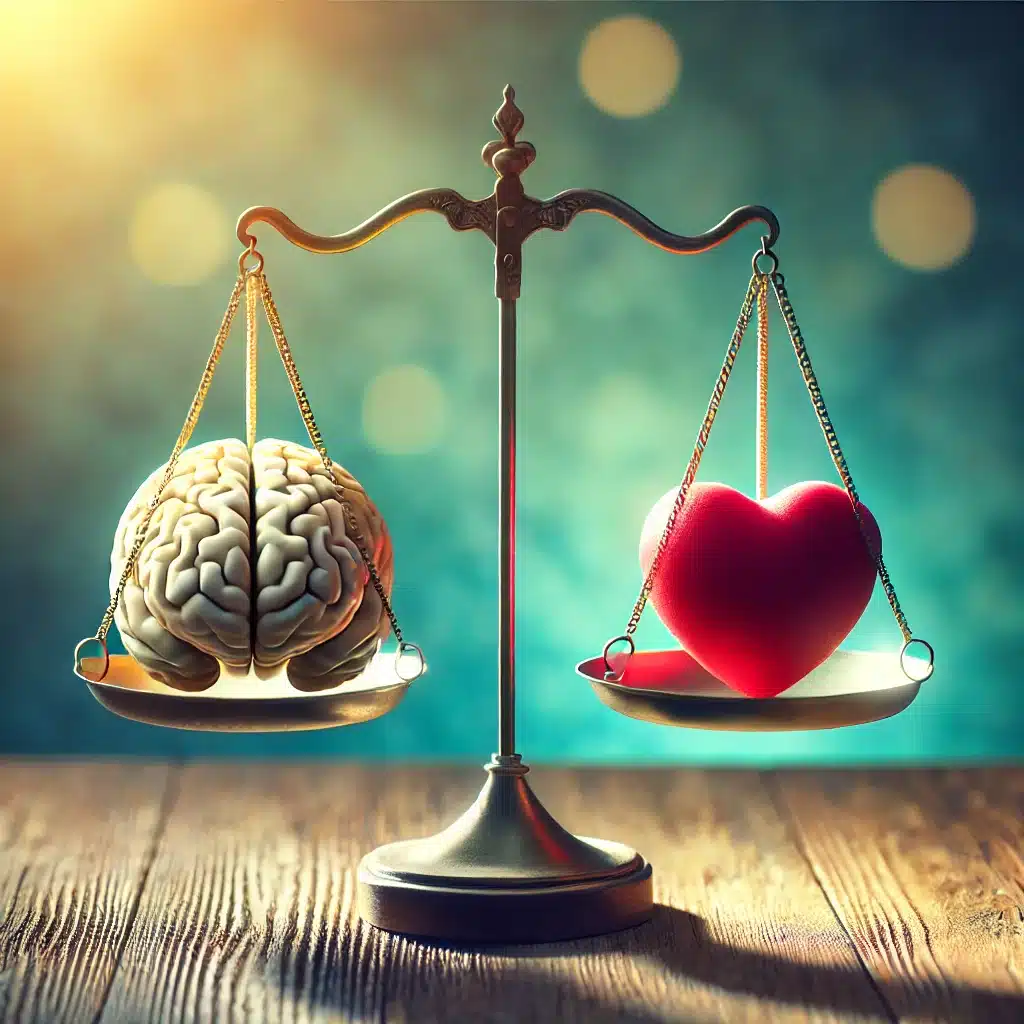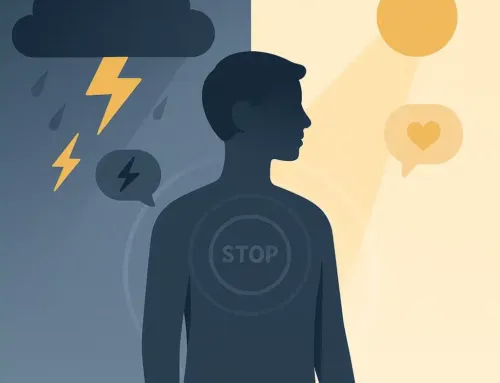
Approx. read time: 5.8 min.
Post: Balanced Thinking and Behaviors: The Key to a Stable and Fulfilling Life
Balanced thinking and behavior play a crucial role in maintaining emotional stability, mental well-being, and healthy relationships. In today’s fast-paced world, where we are constantly bombarded with extreme opinions, high expectations, and emotional triggers, maintaining balance can be challenging. However, developing a balanced mindset can lead to improved decision-making, reduced stress, and a more fulfilling life.
This article explores what balanced thinking and behavior are, their daily impact, both positive and negative aspects, how they influence you and others, and practical ways to cultivate balance in your life.
What is Balanced Thinking and Behavior?
Balanced thinking is the ability to view situations, emotions, and challenges from a neutral and rational perspective, rather than reacting impulsively or being driven by extremes. It involves recognizing different viewpoints, assessing situations fairly, and responding in a way that aligns with long-term well-being.
Balanced behavior, on the other hand, refers to actions that reflect moderation, emotional intelligence, and consideration for yourself and others. This means avoiding extremes such as overindulgence or complete avoidance, excessive negativity or blind optimism, and emotional outbursts or complete emotional suppression.
Together, balanced thinking and behavior create a mindset and lifestyle that promote well-being, resilience, and positive interactions.
The Daily Impact of Balanced Thinking
Balanced thinking influences nearly every aspect of daily life, from how you manage emotions to the way you interact with others and handle challenges.
1. Emotional Stability
Balanced thinking helps you avoid unnecessary stress and emotional swings. For example, instead of catastrophizing a minor setback at work, you assess it rationally, acknowledge that mistakes happen, and take corrective action without self-judgment.
2. Improved Decision-Making
By considering different perspectives and avoiding impulsive reactions, balanced thinking leads to better decision-making. Whether choosing a career move, handling a disagreement, or managing finances, a balanced mindset helps weigh pros and cons without being swayed by emotions alone.
3. Healthier Relationships
Balanced behavior promotes empathy, patience, and effective communication. Instead of reacting angrily to criticism from a friend or partner, a balanced thinker seeks to understand the intent behind their words and responds with clarity and openness.
4. Better Stress Management
Life is full of challenges, but balanced thinking helps in navigating difficulties without feeling overwhelmed. Instead of seeing obstacles as failures, a balanced mindset treats them as learning experiences and growth opportunities.
The Positive and Negative Aspects of Balanced Thinking
While balanced thinking is generally beneficial, like any cognitive approach, it has both positive and negative aspects.
Positive Aspects of Balanced Thinking
-
Enhanced Mental Well-Being
- A balanced perspective reduces anxiety, depression, and stress by avoiding black-and-white thinking.
- Encourages mindfulness and acceptance, reducing unnecessary emotional suffering.
-
Stronger Relationships
- Helps in conflict resolution by considering both sides of an argument.
- Promotes active listening and respect for different opinions.
-
Greater Self-Awareness and Growth
- Allows you to acknowledge mistakes without excessive guilt.
- Encourages personal development by learning from experiences rather than dwelling on failures.
-
Increased Productivity and Focus
- Helps in setting realistic goals and avoiding procrastination or burnout.
- Encourages a steady, methodical approach to work rather than erratic bursts of effort.
Negative Aspects of Balanced Thinking
-
Can Lead to Overthinking
- Constantly trying to see all perspectives can sometimes result in decision paralysis.
- Overanalyzing every situation may make simple decisions unnecessarily complicated.
-
May Be Misinterpreted as Indecisiveness
- Some people may perceive a balanced thinker as hesitant or non-committal, especially in fast-paced environments where quick decisions are valued.
-
Difficulty in Taking a Firm Stand
- While seeing multiple perspectives is beneficial, some situations require firm action. A balanced thinker may struggle to take a definitive stand in conflicts or moral dilemmas.
How Balanced Thinking Influences You and Others
Balanced thinking not only impacts your personal well-being but also shapes your interactions with others.
Influence on Yourself
- Boosts Self-Confidence – A balanced mindset helps you trust your judgment and decision-making skills.
- Reduces Regret and Anxiety – Helps in making decisions with clarity, reducing self-doubt and “what if” scenarios.
- Encourages Personal Growth – Learning from both successes and failures without being overly critical fosters self-improvement.
Influence on Others
- Creates a More Positive Environment – Balanced individuals inspire others to adopt rational, calm, and mindful approaches to challenges.
- Enhances Teamwork and Collaboration – In workplaces and communities, balanced thinkers encourage constructive discussions and teamwork.
- Reduces Conflict – Approaching disagreements with a fair and open mind diffuses tensions and promotes peaceful resolutions.
How to Cultivate Balanced Thinking
Developing a balanced mindset is a continuous process that requires practice and self-awareness. Here are some effective strategies to work on balanced thinking and behavior:
1. Practice Mindfulness
Being present in the moment helps you observe thoughts and emotions without reacting impulsively. Mindfulness techniques such as deep breathing, meditation, or journaling can enhance awareness and control over your reactions.
2. Challenge Extreme Thoughts
When you catch yourself thinking in extremes (e.g., “I’ll never be successful” or “Everything is ruined”), pause and challenge these thoughts. Ask yourself:
- Is this thought 100% true?
- Are there alternative perspectives?
- What evidence supports or contradicts this belief?
3. Develop Emotional Intelligence
Understanding and managing emotions is crucial for balanced thinking. This includes:
- Identifying emotional triggers.
- Practicing self-regulation.
- Empathizing with others’ perspectives.
4. Avoid Cognitive Distortions
Common thinking errors such as overgeneralization, black-and-white thinking, and jumping to conclusions can distort reality. Recognizing and correcting these biases fosters a more balanced perspective.
5. Seek Different Viewpoints
Engage in discussions with people who have diverse perspectives. This broadens your understanding and prevents rigid thinking.
6. Set Realistic Expectations
Having overly high or low expectations can lead to disappointment or underachievement. Aim for realistic goals that challenge you without overwhelming you.
7. Use the “Step Back” Technique
Before reacting emotionally to a situation, take a step back and assess the bigger picture. Ask yourself:
- How will I feel about this a week from now?
- What’s the most rational way to respond?
8. Develop Healthy Coping Mechanisms
Balanced thinkers handle stress with productive coping strategies such as exercise, creative activities, and healthy social interactions rather than avoidance, substance abuse, or unhealthy distractions.
Conclusion
Balanced thinking and behaviors are essential for a healthy and fulfilling life. They help in managing emotions, making sound decisions, improving relationships, and handling life’s challenges with resilience.
While balanced thinking has its challenges, such as potential overthinking or appearing indecisive, the benefits far outweigh the drawbacks. By actively practicing mindfulness, emotional intelligence, and cognitive awareness, anyone can cultivate a balanced mindset that leads to greater peace, success, and harmony in both personal and professional life.
Strive for balance—not perfection—and you’ll find that life becomes more manageable, enjoyable, and meaningful.
Related Videos:
Related Posts:
The Power of Trust: How Its Absence Affects Thinking and Actions, and How to Heal
Introduction to Scratch – Lifelong Kindergarten Group
Neuralink Revolution: Empowering Mobility with Mind-Controlled Gaming
When Your Mental State Takes Over: Overcoming Negative Patterns









